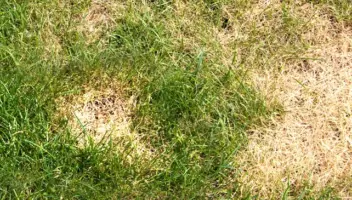How to Fertilize your Lawn

Although your soil supplies some of the nutrients that grass needs, most soil needs nutrients throughout the entire growing season to maintain proper lawn care. A healthy and active lawn will require a blend of nutrients to keep it growing strong. Additionally, lawn fertilizer helps with:
- Recovery from pests and foot traffic
- Reducing and controlling weeds
- Replacing nutrients lost to leaching, volatilization and grass clippings
- Promoting new leaf and root growth
Fertilize Your Lawn
Choosing the right food for your lawn is dependent on a number of different factors, including where you live and what season it is. The most common types of macronutrients are:
- Nitrogen: for plant growth, leaf development and producing the vivid, green color
- Phosphorus: for root growth, the creation of fruit, seeds, and flowers
- Potassium: for root development and resistance to drought a disease.
Before you shop, it is important to perform a soil test. A home test kit can be a great option, or you can send a soil sample to your local cooperative extension office for testing. The test will be able to tell you what type of lawn fertilizer to add to the soil to make it ideal for the plants you plan to grow.
Reading a Fertilizer’s Package
If you have never purchased fertilizer before, the packaging can be quite confusing. Three prominent numbers are displayed on the package to tell you about the soil mix.
- Nitrogen is the first number
- Phosphorous content is the second
- Potassium content is the third.
For example, a bag marked 16-4-8 is 16% nitrogen, 4% phosphorus and 8% potassium.
Types of Fertilizer
There are a few different types of fertilizer that you can choose for your lawn care needs. It’s important to note the differences to find the best fertilizer for you.
Liquid Fertilizers: Liquid fertilizers are fast acting. Plants are able to quickly absorb the nutrients through their leaves and roots. Fertilize your lawn with a liquid fertilizer every two to three weeks. These work best with container plants, but you can also find liquid lawn fertilizers.
Granular Fertilizers: You can apply a granular fertilizer dry – with a mechanical spreader. Then, you add water. This type of fertilizer is great for lawns and gardens. They are easy to control because you can see how much you are using. There are two different types of granular fertilizers:
- Quick-Release: Provides nitrogen to plants immediately. These generally last for 3 to 4 weeks.
- Slow-Release: Sulfur coated fertilizers last about 8 weeks, while polymer coated types last about 12 weeks. Time variances will depend on the amount of rainfall. Slow release fertilizers have their advantages because they don’t need to be applied as often.
Related: Know Your Fertilizers
Prepping Your Lawn for Fertilizer
If you plan on using fertilizer for your lawn care needs, it is important to prep your lawn properly. Here are some basic steps to consider:
- Identify Your Grass Type: First, you’ll want to identify the type of grass that you have as a cool or warm season grass. A good rule of thumb is that if you live in the northern part of the US, you have cool season grass, while the south has warm season grasses.
- Perform a Soil Test: A home kit will help you determine the pH of your soil. The pH level measures the alkalinity or acidity of a substance. You’ll want to bring your soil as close to neutral as possible to get the most out of your fertilizer. A pH range between 6.0 and 7.0 is accepted as being the best for growing quality grass.
- Determine your Lawn Size: Fertilizers are sold by the amount necessary to cover a certain square footage. The fertilizer package will tell you how many square feet it can cover.
- Application Timing: When to feed your lawn is essential for proper lawn care maintenance. For cool-season grasses, it is best to fertilizer heavy in the fall and light in the early spring. Use either slow or quick realize fertilizer. Warm season grasses like to be fed in the spring.
Related: When to Fertilize your Lawn
We hope you find these fertilizer tips to be helpful for all of your needs this spring! What else are you doing to create a healthier lawn? Leave us a comment below!


